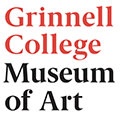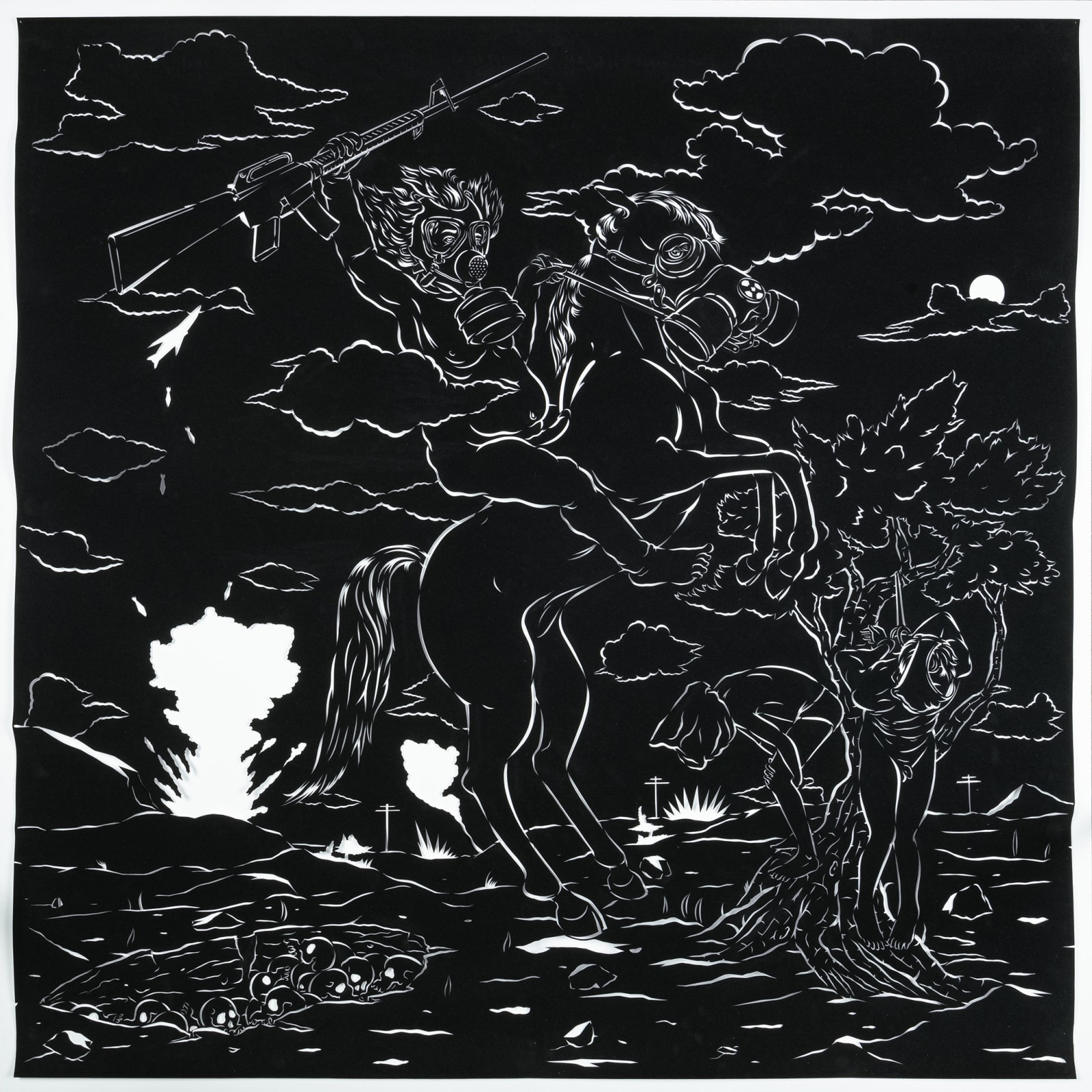-
Artworks

William Villalongo
The Wild, Wild, West!, 2007Velour paper42 1/2 x 42 1/2 in.Grinnell College Museum of Art Collection (2009.007)A contemporary take on the 'wild west,' Villalongo’s version is fought not with long guns but automatic weapons, chemicals, and bombs. In modern parlance, the phrase is often used to...A contemporary take on the "wild west," Villalongo’s version is fought not with long guns but automatic weapons, chemicals, and bombs. In modern parlance, the phrase is often used to describe an unregulated marketplace, governed by sheer bravado and a disregard for rules and regulations. Here we are reminded that while the "wild west" might signify a period of exuberant expansion then and now, it comes with a heavy price and human cost.
In the words of the artist:
It's about reframing the “wild” in the Hollywood idea of the “wild west” from manifest destiny to absolute unabashed disregard for human life, things we sort of knew to be true when we think about all wars past, endlessly reproduced and replayed in the 24-hour news cycle, culminating in the atrocities perpetrated by American soldiers in Iraq, specifically, but not exclusively, at Abu Graib. Here, an obese, automatic-rifle-toting figure based on a Ruben’s style Bacchus rides a rearing stallion. Both the cowboy and the horse are wearing gas masks. They stand heroic (and, in the case, of the cowboy, visibly aroused) with mass graves to one side and tortured prisoners on a tree to the other. bombs dropping in the background. My mind was on Goya’s Disasters of War series, in which he was trying to process what he was seeing. The unimaginable and ugly reality of the world is sometimes best excised through making, because words lose all meaning in the face of it.
2of 2


